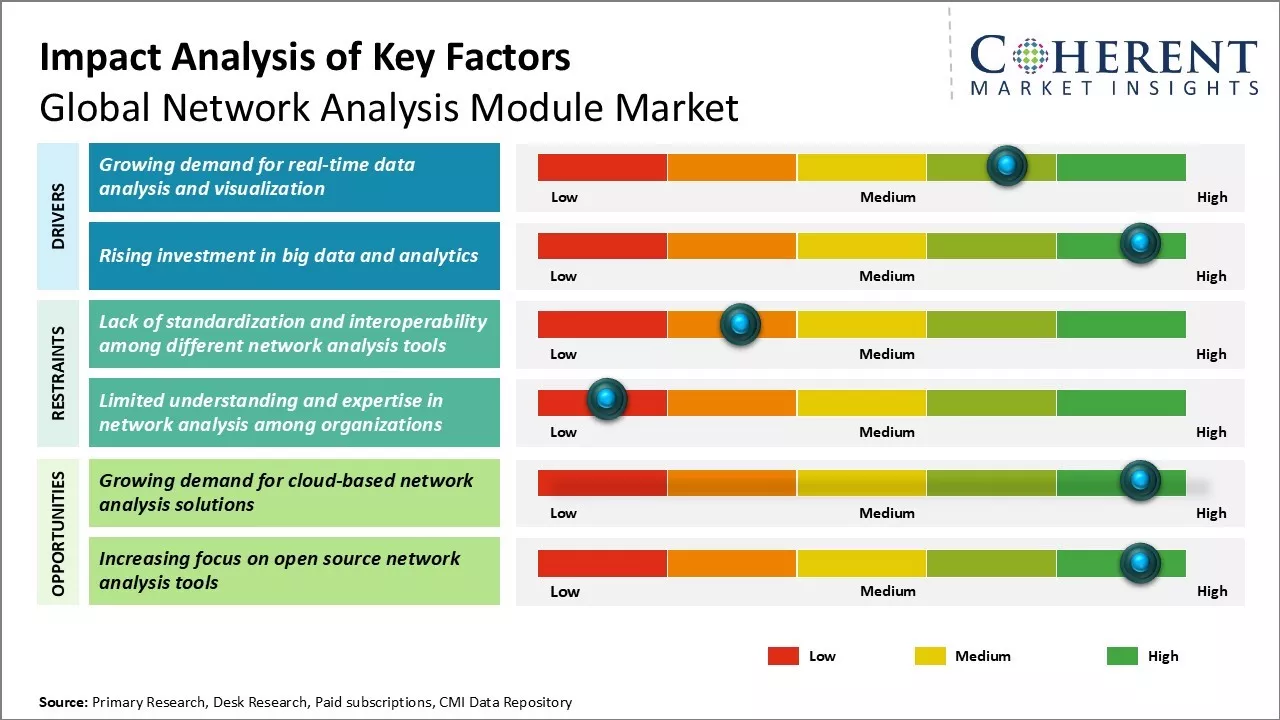The global network analysis module market is estimated to be valued at USD 4.47 Billion in 2025 and is expected to reach USD 18.96 Billion by 2032, exhibiting a compound annual growth rate (CAGR) of 22.9% from 2025 to 2032. This is attributed to factors such as rising demand for network analysis across various industry verticals for applications including network modelling, pattern detection, and security and management.

To learn more about this report, Request sample copy
Increasing deployment of cloud applications and services is positively impacting the adoption of network analysis modules. Various organizations such as Cisco, Fortinent Fortisiem, IBM Corporation, Juniper Networks, Logicmonitor, Microsoft, etc. are increasingly implementing network analysis solutions to gain insights from the massive volume of network traffic data generated each day. Further technological advancements in network analysis with capabilities such as real-time monitoring and advanced data analytics are expected to drive greater demand. However, issues pertaining to data privacy and security may hamper the market growth to some extent during the forecast period.
Market Driver - Growing demand for real-time data analysis and visualization
With the rapid digitization across all industries, data has become one of the most valuable assets for any organization. However, analyzing large volumes of data in a timely manner continues to pose major challenges. Traditional data analysis tools are unable to process real-time streaming data and provide prompt insights. On the other hand, network analysis has emerged as a powerful approach to map relationships and interactions within large and complex datasets. Businesses are recognizing the potential of network analysis to derive meaningful patterns and structures from real-time data flows. This helps organizations gain a holistic understanding of dynamic systems and make quicker decisions.
For instance, In August 2023, TPG Telecom, a prominent Australian telecommunications company, partnered with Ericsson, a global leader in communications technology, to launch a cloud-native and AI-powered analytics tool aimed at enhancing network performance. This collaboration will enable TPG Telecom to gain valuable insights from its fixed wireless access, 4G, and 5G mobile, as well as Internet of Things (IoT) subscribers, utilizing advanced data collection methods with embedded intelligence to predict, prioritize, and resolve performance issues in real-time.
Joining thousands of companies around the world committed to making the Excellent Business Solutions.
View All Our Clients